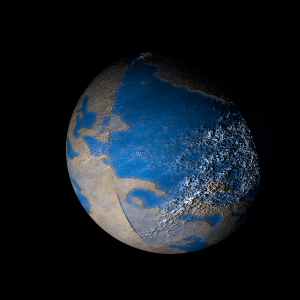|
|
Space Astro
|
Info for exoplanet "Orixsi Rir"
| Scientific (actual) data |
|---|
| Name | TOI-1471 b |
| Planet status | Confirmed |
| Planet mass | 0.031 |
| Radius | 0.348 |
| Orbital period | 20.7729 |
| Semi major axis | 0.1438 |
| Orbit eccentricity | 0.22 |
| Discovered | 2023 |
| Updated | 2023-07-03 |
| Omega | 6 |
| Tzero tr | 2458770 |
| K | 2.48 |
| Temperature (kelvin) | 663 |
| Publication | Published in a refereed paper |
| Detection type | Primary Transit |
| Mass measurement type | Radial Velocity |
| Radius measurement type | Primary Transit |
| Alternate names | HIP 9618 b |
| Star name | TOI-1471 |
| Right ascension | 30.9° |
| Declination | 21.28° |
| Mag v | 10 |
| Star distance | 62.29 |
| Star mass | 1.022 |
| Star radius | 0.9662 |
| Star temperature | 5609 |
| Star alternate names | HIP 9618 |
| Wikipedia article | TOI-1471 b |
Back
| |
| Fictional info (?) |
|---|
| Suggested name | Orixsi Rir |
| Planet type | Terrestrial |
|
The largest moon is crowded with strange poisonous insects known as "Panlene-hoepuck". They survive only by finding nourishment in the Medeia Nand plant. They are similar to the Mnehianan and have 8 arms and vary in size from 50 to 120 cm. Most Panlene-hoepuck are able to reproduce at temperatures from 130 to 200°C and to some degree the high radiation level. |
| Estimated population | 80000000000 |
| Atmosphere | Oxygen | 91% |
| Water | 7.8% |
| Methane | 0.79% |
| Carbon dioxide | 0.0031% |
| Atmospheric pressure | 8 bar |
 |
| Moon | Anpidpe | Very small irregular crater-filled asteroid |
| Harpho | Large almost round oceanic moon |
| Saxame Komoon Ke | Very small potato shaped gaseous comet |
| Google search for Orixsi rir |
|
Website by Joachim Michaelis
|
|
|
|